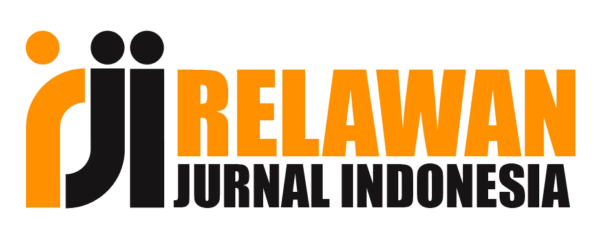Implementasi POE2WE dengan LKS untuk peningkatan penguasaan konsep getaran harmonis sederhana siswa
Abstract
The purpose of the study was to explain the differences in the application of worksheets as a supplement to the Prediction, Observation, Explanation, Elaboration, Write and Evaluation (POE2WE) model, in mastering the concept of simple harmonic vibration. The research method used is a quantitative quasi-experimental design. The research subjects were 72 students who were determined by purposive sampling. The instrument used is a multiple choice objective test. The results of the study reported that the POE2WE learning model had an effect on increasing student understanding but its effectiveness was still relatively low. An interesting result is that a significant difference was found from the results of the t test with the acquisition of the value tcount (12.30) > ttable ( ), a decision can be taken to accept the working hypothesis. The <g> value obtained in the control class is 0,08 and gain value in the experimental class is 0,27 The conclusion of the study is that the used of worksheets in POE2WE has a positive effect on mastery of the concept of simple harmonic vibrations and an increase in mastery of concepts is included in the low category after the application of the learning model.
Keywords
Full Text:
PDF (BAHASA INDONESIA)References
Allo, A. Y. T., Jatmiko, B., & Agustini, R. (2015). Pengembangan perangkat pembelajaran fisika model guided discovery learning menggunakan alat sederhana untuk mereduksi miskonsepsi siswa sma pada materi fluida statis. JPPS (Jurnal Penelitian Pendidikan Sains), 5(1), 769-778.
Awalsyah, A., Sarwi, S., & Sutikno, S. (2018). Pengembangan Lembar Kerja Siswa (Lks) Berbantuan Kvisoft Flipbook Maker Untuk Mengembangkan Keterampilan Ilmiah Siswa. Upej Unnes Physics Education Journal, 7(3), 28-35.
Fitrianingrum, A. M., Sarwi, S., & Astuti, B. (2016). Keefektifan Project Based Learning Berbasis Eksperimen pada Penguasaan Konsep dan Kinerja Siswa SMA. UPEJ Unnes Physics Education Journal, 5(2), 20-27.
Hake, R. R. (1998). Interactive-engagement versus traditional methods: A six-thousand-student survey of mechanics test data for introductory physics courses. American journal of Physics, 66(1), 64-74.
Lase, D. (2019). Pendidikan di era revolusi industri 4.0. SUNDERMANN: Jurnal Ilmiah Teologi, Pendidikan, Sains, Humaniora dan Kebudayaan, 12(2), 28-43.
Lestari, T. P., Sarwi, S., & Sumarti, S. S. (2018). STEM-based Project Based Learning model to increase science process and creative thinking skills of 5th grade. Journal of primary education, 7(1), 18-24.
Nana, N., & Surahman, E. (2019). Pengembangan Inovasi Pembelajaran Digital Menggunakan Model Blended POE2WE di Era Revolusi Industri 4.0. In Prosiding SNFA (Seminar Nasional Fisika Dan Aplikasinya) (Vol. 4, pp. 82-90).
Nana, N. (2020). Efektivitas Model POE2WE Dalam Penyampaian Materi Metode Ilmiah Guna Meningkatkan Hasil Belajar Dan Minat Belajar Siswa. In Prosiding Seminar Pendidikan Fisika FITK UNSIQ (Vol. 2, No. 1, pp. 233-241).
Nana, S., Akhyar, M., & Rochsantiningsih, D. (2014). The Development of Predict, Observe, Explain, Elaborate, Write, and Evaluate (POE2WE) Learning Model in Physics Learning at Senior Secondary School. Development, 5(19), 56-65.
Putri, S. B., Sarwi, S., & Akhlis, I. (2018). Pembelajaran inkuiri terbimbing melalui kegiatan lab virtual dan eksperimen riil untuk peningkatan penguasaan konsep dan pengembangan aktivitas siswa. UPEJ Unnes Physics Education Journal, 7(1), 14-22.
Samosir, H. (2010). Model Pembelajaran Predict-Observe-Explain-Write (POEW) untuk Meningkatkan Penguasaan Konsep Kalor dan Keterampilan Berpikir Kritis Siswa SMA (Doctoral dissertation, Universitas Pendidikan Indonesia).
Sarwi, S., & Prayitno, W. W. (2016). Implementasi Pembelajaran Fisika Guided Inquiry untuk Meningkatkan Penguasaan Konsep dan Pengembangan Karakter Konservasi Siswa. Jurnal Pendidikan Fisika Indonesia, 12(1), 1-7.
Septikasari, R., & Frasandy, R. N. (2018). Keterampilan 4C abad 21 dalam pembelajaran pendidikan dasar. Tarbiyah Al-Awlad: Jurnal Kependidikan Islam Tingkat Dasar, 8(2), 107-117.
Sonia, T.N. (2019). Menjadi Guru Abad 21: Jawaban Tantangan Pembelajaran Revolusi Industri 4.0. Prosiding Seminar Nasional Teknologi Pendidikan Peran Teknologi Pendidikan Dalam Mengembangkan Dan Meningkatkan Keprofesionalan Pendidik Di Era Revolusi Industri 4.0. Digital Library Universitas Negeri Medan.
Susanti, E., Maulidah, R. A., & Makiyah, Y. S. (2019). Peran Guru Fisika Di Era Revolusi Industri 4.0. Diffraction: Journal for Physics Education and Applied Physics, 1(1).
DOI: https://doi.org/10.17509/wapfi.v8i1.43966
Refbacks
- There are currently no refbacks.
Copyright (c) 2023 Fatin Noor Ulya

This work is licensed under a Creative Commons Attribution-ShareAlike 4.0 International License.
The Journal Wahana Pendidikan Fisika http://ejournal.upi.edu/index.php/WapFi/ is licensed under a Creative Commons Attribution-ShareAlike 4.0 International License
The Journal WaPFi (Wahana Pendidikan Fisika).
All rights reserverd. pISSN 2338-1027 eISSN 2685-4414
Copyright © Faculty of Mathematics and Science Education (FPMIPA) Universitas Pendidikan Indonesia (UPI)










